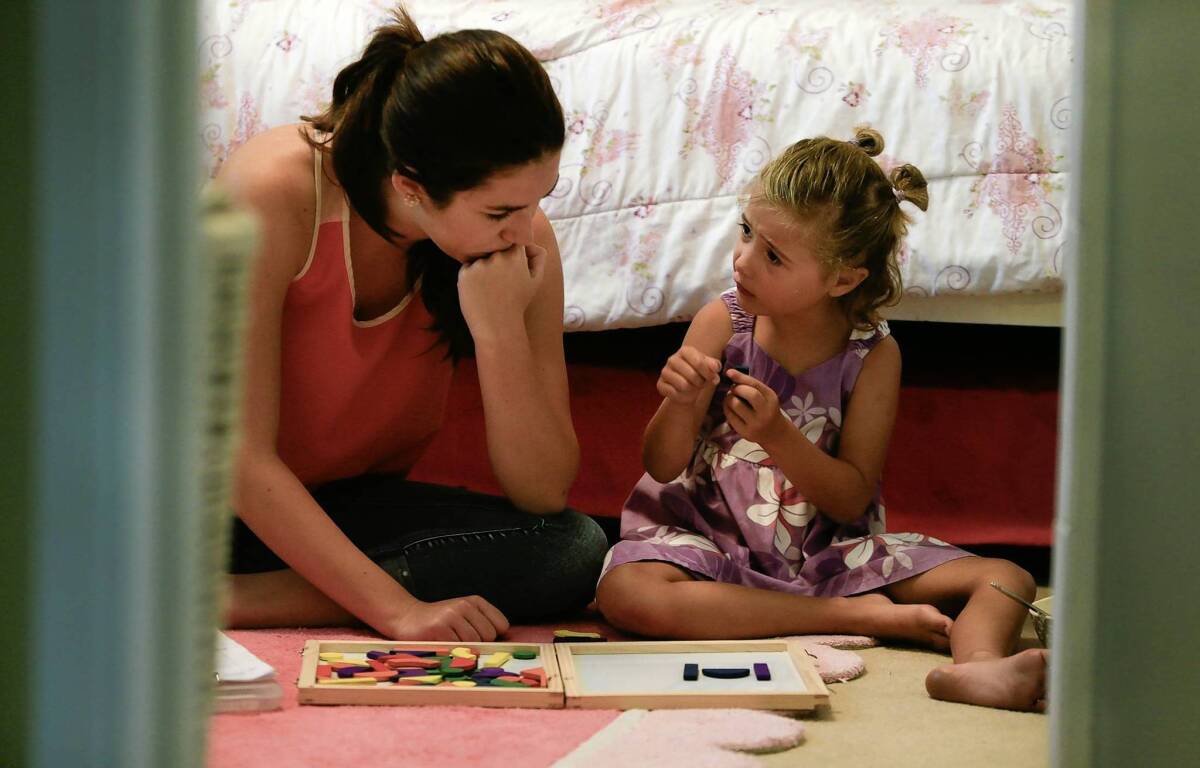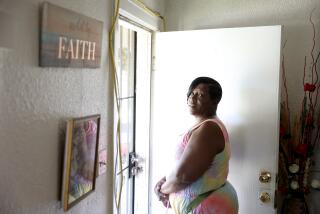An autism treatment lost in California’s shift from Healthy Families

- Share via
SACRAMENTO — Evan Kim was 2 years old when he was diagnosed as autistic last year, and his parents searched for some way to curb his head-banging tantrums.
Using a state-financed healthcare program for low-income families, they found therapists who could provide a specific kind of autism treatment aimed at analyzing and improving behavior. The therapists spent 40 hours a week with Evan at the family’s home in the Los Angeles area, coaxing him to stop the tantrums and improving his communication skills.
Evan’s mother, Jenny Kim, was relieved — until last month, when her children’s healthcare plan changed and the therapy, known as applied behavior analysis, was no longer covered.
“I’m afraid he’s not going to make any progress from now on,” Kim said. The same service, she said, would cost $10,000 a month out of pocket.
Evan’s therapy was a casualty of the state’s effort to phase out its Healthy Families insurance program and shift the nearly 900,000 children it covered into Medi-Cal, the broader healthcare program for the poor. Despite officials’ assurances that the transition would not jeopardize services, activists say hundreds of children are losing coverage for applied behavior analysis.
“Those are the families that fall through the cracks,” said Julie Kornack, a public policy analyst at the Los Angeles-based Center for Autism and Related Disorders. “If they don’t get the treatment they need, they won’t be contributing members of society. And everyone will have to pay to take care of them.”
Activists fear that other coverage gaps could surface as the state prepares to move the final 150,000 children into Medi-Cal in the next two months. Elizabeth Abbott, an official at the advocacy group Health Access, said she worried that dental resources could also become strained.
“This is potentially the tip of the iceberg,” Abbot said.
Rene Mollow, a deputy director at the California Department of Health Care Services, said the transition has been mostly smooth. She said some children can get similar autism therapy through a federal program or local school district, but she conceded that those services won’t be available to everyone.
Lawmakers agreed to eliminate Healthy Families last year as a savings measure pushed by Gov. Jerry Brown, but the money hasn’t materialized the way the administration had hoped. The state saved only one-fifth of the $13.1 million it had projected in the fiscal year that just ended.
Administration officials say that’s the result of delays, increasing healthcare costs and other factors.
Senate leader Darrell Steinberg (D-Sacramento) pushed to restore coverage for applied behavior analysis for children with autism in the state budget that went into effect last Monday. However, the $50 million was not included in the budget that lawmakers sent Brown last month.
“The administration promises us a resolution, but we don’t have one yet,” Steinberg said.
Mollow said the Brown administration was concerned about the cost as the state emerges from a years-long budget crisis.
“We’re coming out of a significant deficit,” she said. “We’re just looking to be prudent with the dollars that we have.”
Applied behavior analysis is an intensive treatment in which therapists use positive reinforcement to improve a child’s behavior and detailed instructions to make learning new tasks easier. It is used to teach a child, among other things, how to get dressed in the morning and play well with others.
Brown expressed skepticism of the therapy when he signed a 2011 bill requiring many private insurers — but not Medi-Cal — to cover applied behavior analysis.
“There are remaining questions about effectiveness, duration and the cost of the covered treatments that must be sorted out,” he said in a statement.
Autism experts disagree, saying the therapy can be costly but is vital.
“They’re taking away the only scientifically proven treatment for children who have a very significant medical condition,” said Jonathan Tarbox, director of research and development at the Center for Autism and Related Disorders. The center provides applied behavior analysis through state-funded programs.
Patrick Sullivan of San Diego said his 6-year-old autistic daughter, Naia, has benefited dramatically from applied behavior analysis.
Sullivan said a state employee assured him earlier this year that his daughter’s transition to Medi-Cal would be “seamless.” Later, he learned that her therapy would no longer be covered at the end of this month.
Sullivan hopes his daughter can receive treatment at one of California’s regional centers that provide services to the developmentally disabled. But Naia’s autism, he said, may not be severe enough for her to qualify, or the amount of therapy she receives could be sharply reduced.
“I don’t know what’s going to happen,” he said.
More to Read
Sign up for Essential California
The most important California stories and recommendations in your inbox every morning.
You may occasionally receive promotional content from the Los Angeles Times.











